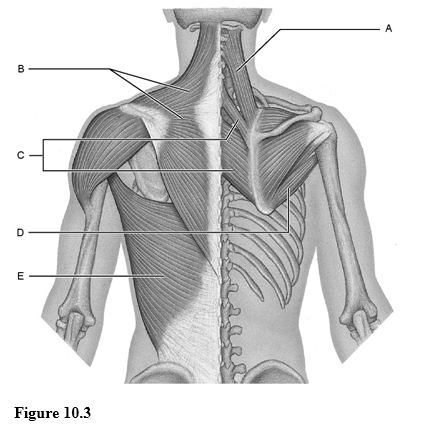Using Figure 10.3, match the following:

1) Trapezius muscle.
2) Teres major muscle.
3) The latissimus dorsi.
4) Rotates scapula.
5) Retract scapula.
6) Levator scapulae.
1) B
2) D
3) E
4) B
5) C
6) A
You might also like to view...
Lymphocytes can develop and mature in the ________
A) spleen B) tonsils C) lymph nodes D) red bone marrow
Which of the following indicates the parts of a renal tubule in the correct sequence from
beginning to end? A) Proximal convoluted tubule, ascending limb of nephron loop, descending limb of nephron loop, distal convoluted tubule B) Collecting duct, proximal convoluted tubule, descending limb of nephron loop, ascending limb of nephron loop, distal convoluted tubule C) Distal convoluted tubule, ascending limb of nephron loop, descending limb of nephron loop, proximal convoluted tubule D) Proximal convoluted tubule, descending limb of nephron loop, ascending limb of nephron loop, distal convoluted tubule
What are the three segments of the small intestine called?
a. duodenum, jejunum, and ileum b. duodenum, septum, and colon c. duodenum, cecum, and ileum d. antrum, jejunum, and fundus e. fundus, ileum, and colon
Determine the impact if the connection between the sinoatrial (SA) node and the atrioventricular (AV) node becomes blocked
A) The atria will contract more forcefully. B) The ventricles will contract more quickly. C) The ventricular rhythm will not change. D) The ventricles will contract more slowly.